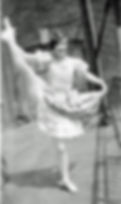The Writing Life: Letting Yourself Be Found
- Daniel Weeks
- Mar 19, 2021
- 2 min read
Updated: Mar 30, 2021
Sometimes the work finds you. At least that’s what Stefan Zweig says on the first page of his novel Beware of Pity. Rather than “setting out to find” a story or theme, a writer need only “let himself be found by characters and happenings, which, insofar as he has preserved the heightened capacity for observing and listening, unceasingly seek him out as their instrument of communication.” These are the stories that have no one else to tell them and will be lost if the writer decides to coldly turn a deaf ear.
I’ve often had this experience of suddenly finding myself found, most recently when I inherited a box of photographs from my grandmother’s time as a Tiller dancer in the 1920s. It had crossed my mind more than once that it would be worthwhile to write something about her career as a dancer in London and New York during those roaring years, but the stories she related to us before she died were too disconnected and few to be stitched into a book.
The photographs changed all that. Here were a hundred pictures or more, not just of her but of her troupe-mates and many other performers with whom she had worked in London, New York, and elsewhere. There were even a few shots of the troupe at the Tiller school in London in 1923. What is more, she had written captions on the back of quite a few of these photos before she sent them home to Preston, England, as a way to keep her folks apprised of her doings in London and America. These pictures made their way back to the U.S. at some point, perhaps on her return from one of the trips she made to the U.K. after World War II.
My grandmother Doris Waterworth initially came to the U.S. in 1925 to appear with her troupe of eight Tiller Dancers in Jerome Kern’s musical Sunny at the New Amsterdam Theatre in New York. She was just eighteen then, but she was already a veteran of the London stage, having performed with the same group of dancers for two years at the Victoria Palace.
The captions on the back of the photos, along with an itinerary discovered among her papers, opened a new avenue for researching the history of my grandmother’s troupe on websites like Newspapers.com and Ancestry. I also scanned some of the pictures and posted them on the Tiller Dancers Facebook page, which connected me with the grandson of one of her troupe-mates. Before I knew it, I had amassed enough information about these dancers to begin writing a narrative history, for which the stories my grandmother told various members of our family would provide embellishment.
In this way, my next writing project found me. My grandmother and her fellow performers seemed to have sought me out “as their instrument of communication." In essence, I was their only choice. No one else had the information and resources to tell this nearly century-old story. And I consider myself fortunate to have had my ear tuned to what those curled and faded photos wanted to tell me before it was too late.


